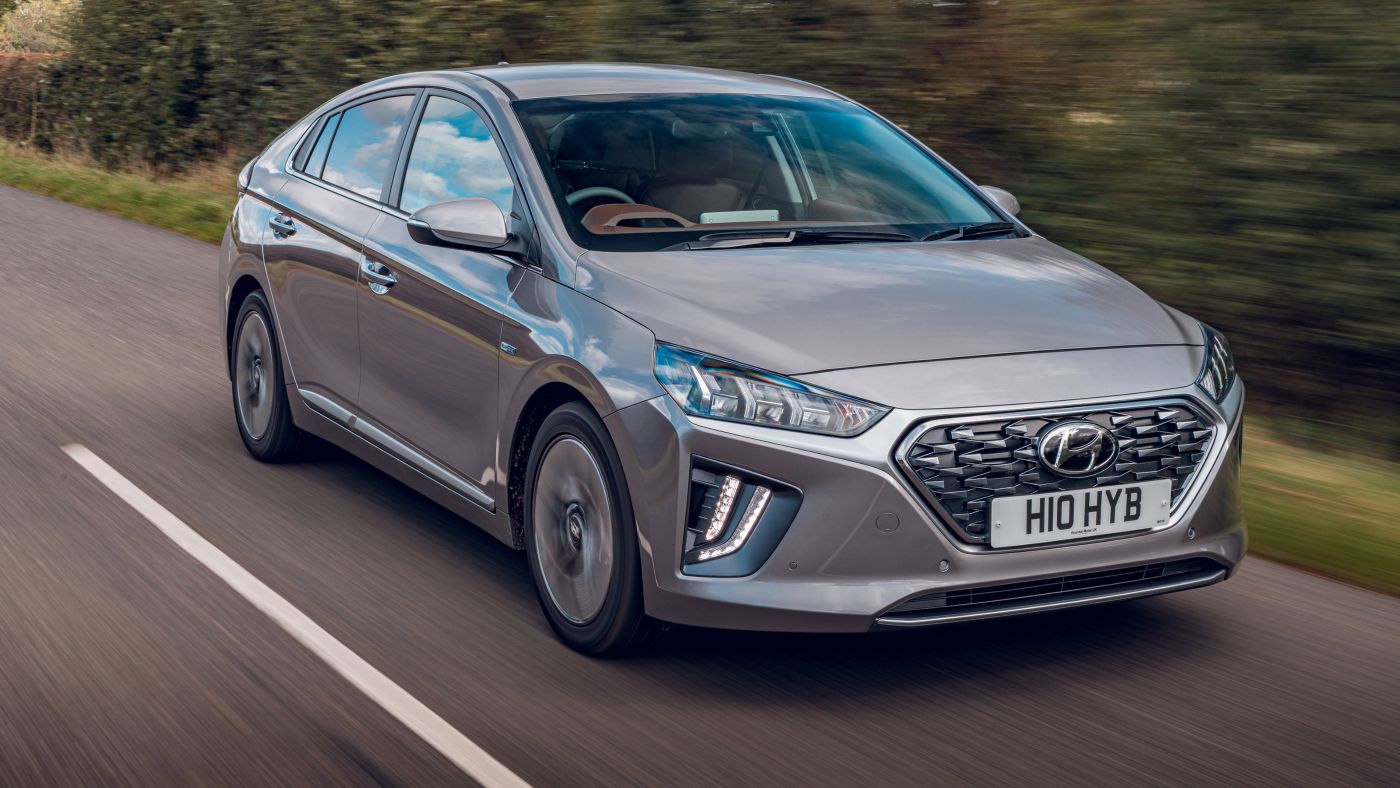Hybrid cars are supposed to blend the best of both worlds—fuel efficiency and low emissions with the reliability of a gas engine. But let’s be real: not all hybrids are created equal. While some models hum along for years without a hiccup, others are known to throw tantrums in the form of dashboard lights, system errors, or the dreaded “reset required” message.
In this article, we’re cutting through the fluff. You’ll find 5 hybrid models that have earned a reputation for rock-solid reliability—no electrical drama, no surprise check-ins with the dealer.
Hybrids With No Electrical Issues
And right after that, we’ll look at 5 hybrids that are notorious for electrical gremlins, the kind that leave owners constantly rebooting systems like they’re troubleshooting a 10-year-old laptop. Let’s dive into the real-world hits and misses of hybrid dependability.
1. Toyota Prius (2016–2022)
The Toyota Prius is the gold standard of hybrid dependability. Its electrical system particularly the hybrid synergy drive and battery management module is engineered to operate for hundreds of thousands of miles with minimal hiccups.
Key strengths:
- Excellent ECU calibration
- Proven software stability
- Low incidence of battery control module failure
- Rarely throws random codes or warning lights
Real-world feedback: Owners report minimal need for dealership visits due to electrical problems, and many clock 200,000+ miles with zero resets or system reboots.
For over two decades, the Toyota Prius has stood as the go-to hybrid for eco-conscious drivers and anyone looking to stretch their fuel budget. It’s been a symbol of efficiency, a pioneer in hybrid tech, and a reliable daily driver for millions.
But as the hybrid market becomes more crowded and competitive, even the Prius has to evolve to stay relevant. In 2020, Toyota rolled out a handful of updates aimed at keeping the Prius fresh and appealing.
These include a revised touchscreen interface, improved interior materials, and the long-awaited addition of Apple CarPlay. Toyota also continues to offer its all-wheel-drive variant (AWD-e), a smart move for buyers in regions where winter driving is a factor.
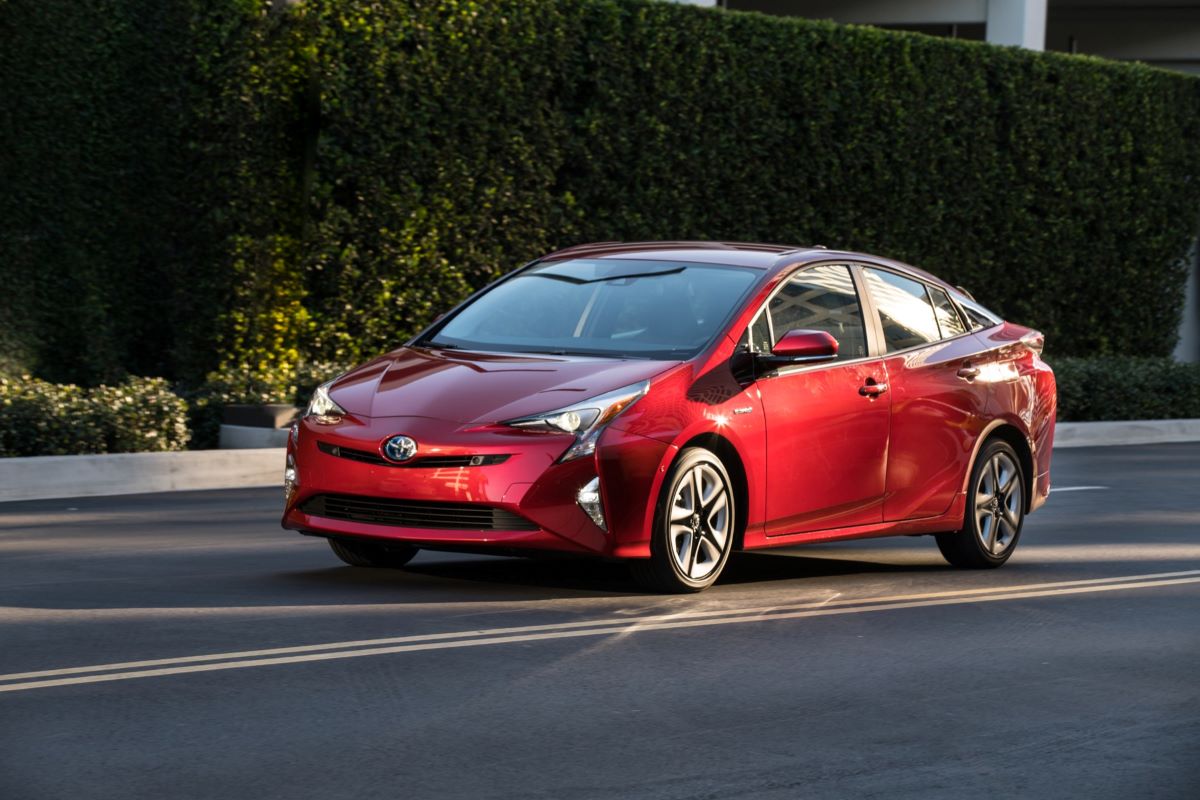
Performance-wise, the 2020 Prius won’t blow anyone away. Acceleration is modest and won’t win any drag races, but for many Prius drivers, that’s beside the point. What the car lacks in speed, it more than makes up for in fuel efficiency.
EPA estimates vary slightly depending on the trim, but you can expect 50 to 56 mpg combined—and up to 58 mpg city with the L Eco model. For real-world drivers, this means fewer trips to the pump, which is exactly why the Prius continues to appeal.
Inside, the Prius delivers a smooth and comfortable ride, with plenty of room for both passengers and cargo. The hatchback design adds to its practicality, making it a great option for commuting, weekend trips, or grocery runs.
While the upgraded touchscreen and newly added Apple CarPlay bring the Prius more in line with today’s tech expectations, the infotainment system still doesn’t feel quite as slick or responsive as what you’ll find in some competitors.
Still, the 2020 Prius holds its own thanks to its blend of efficiency, reliability, and everyday usability. Its biggest drawbacks are familiar: sluggish acceleration and infotainment tech that’s just a step behind the competition.
Meanwhile, rivals like the Honda Insight offer a more traditional look and stronger driving dynamics without sacrificing much in terms of fuel economy. The new Corolla Hybrid and the Kia Niro are also strong alternatives for buyers who want hybrid benefits with a more conventional feel.
At the end of the day, the 2020 Toyota Prius is still one of the best options for anyone prioritizing fuel efficiency and low operating costs. It may not be the flashiest or fastest, but it remains a smart, dependable choice—and a reminder of why the Prius name still carries weight in a world full of hybrids.
2. Lexus RX 450h (2013–2020)
Built on Toyota’s rock-solid hybrid architecture, the RX 450h is luxury that doesn’t compromise reliability. Its electrical systems are meticulously shielded from the common failures seen in less refined brands.
Introduced over ten years ago, the Lexus RX hybrid made a name for itself by challenging the assumption that luxury SUVs had to be gas-guzzling machines. Since its debut, the segment of premium hybrid SUVs has expanded considerably. Despite the rise in competition, the 2015 Lexus RX 450h remains a standout choice in what is now a more crowded and competitive category.
What makes the RX 450h a success is its ability to deliver everything expected from a luxury hybrid SUV: exceptional fuel economy, smooth and composed performance, a comfortable interior, and a generous list of standard features.
With an EPA combined fuel economy rating of 30 mpg, the RX 450h significantly outperforms gasoline-only luxury crossovers and stands out as one of the most fuel-efficient options in the premium hybrid SUV class.
While some hybrid vehicles compromise performance in the name of efficiency, that trade-off isn’t present here. Power comes from a 3.5-liter V6 engine paired with electric motors and a battery pack, resulting in a powertrain that consistently provides ample performance.
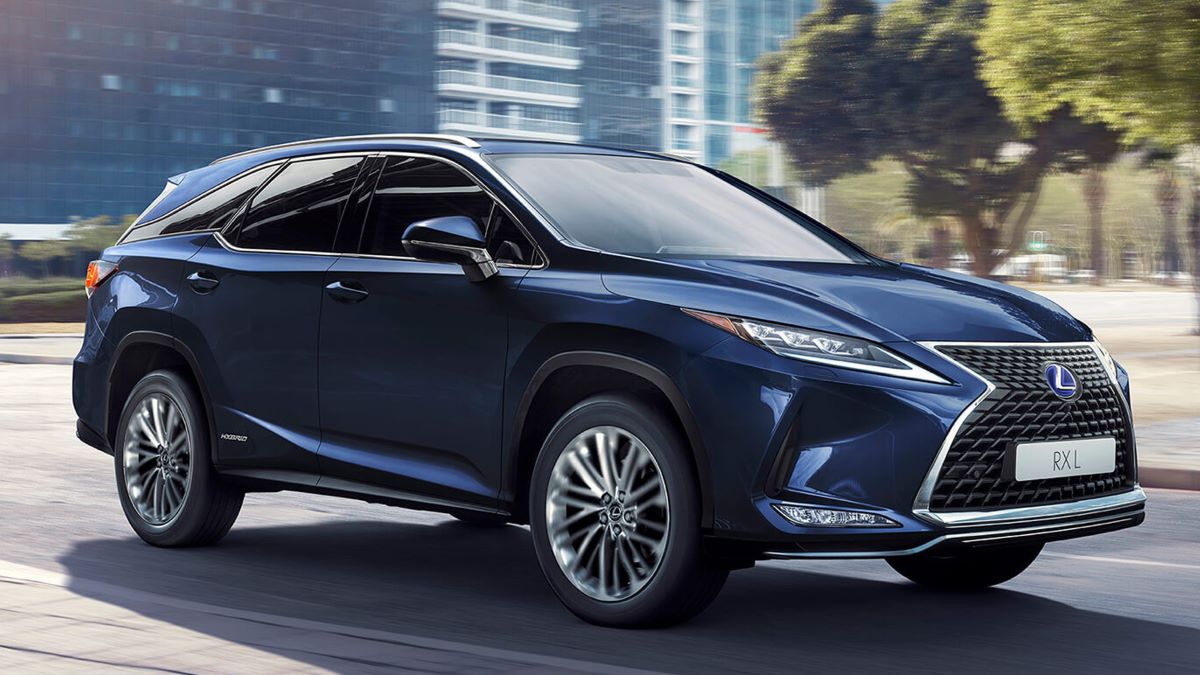
The ride is notably smooth, and the RX does an excellent job of shielding occupants from road imperfections. The cabin is spacious, whisper-quiet, and tastefully designed, featuring a wide array of advanced technological features.
Even with its strong credentials, the RX 450h — which holds a “B” rating from Edmunds.com — faces competition from other luxury hybrid SUVs.
One limitation is its lack of a third-row seat, making it less suitable for those who need more passenger capacity. In such cases, the Infiniti QX60 Hybrid is a better fit. The Audi Q5 Hybrid stands out for its high-quality interior craftsmanship, and when it comes to acceleration, the Porsche Cayenne Hybrid clearly outpaces the Lexus.
That said, the RX 450h still comes out ahead in terms of fuel efficiency compared to these competitors and is also one of the most budget-friendly offerings in its class. With strengths in features, fuel economy, and overall value, it’s a compelling option for buyers in search of a luxury crossover that excels where it counts.
Key strengths:
- Highly insulated wiring looms
- Stable communication between ECUs
- Rare inverter problems
- Long battery life
Real-world feedback: This SUV can sit for weeks and still start without throwing a single error code something few luxury hybrids can claim.
Also Read: 5 SUVs Rated Best for Winter-Tire Fitment and 5 With Clearance Issues
3. Honda Accord Hybrid (2018–2022)
Honda’s i-MMD hybrid system (Intelligent Multi-Mode Drive) in the Accord is refined and robust. It seamlessly shifts between EV and gas modes without error-prone sensors or communication faults.
The Honda Accord Hybrid has long held its position as a class leader, largely due to its exceptional fuel efficiency, spacious interior, and better-than-average performance in both handling and acceleration.
In 2018, it takes another leap forward. Like the conventional Accord, the 2018 Accord Hybrid has undergone a full redesign, offering increased interior space, a more modern and striking exterior, and an upgraded suite of technology and safety features.
Now standard on the base Accord Hybrid are several advanced safety technologies, including adaptive cruise control, forward collision mitigation, blind-spot monitoring, and lane departure warning.
These additions enhance the vehicle’s value and safety profile considerably. Another important improvement is in cargo versatility: thanks to a redesigned hybrid battery setup, the Accord Hybrid now matches the standard Accord’s cargo capacity.
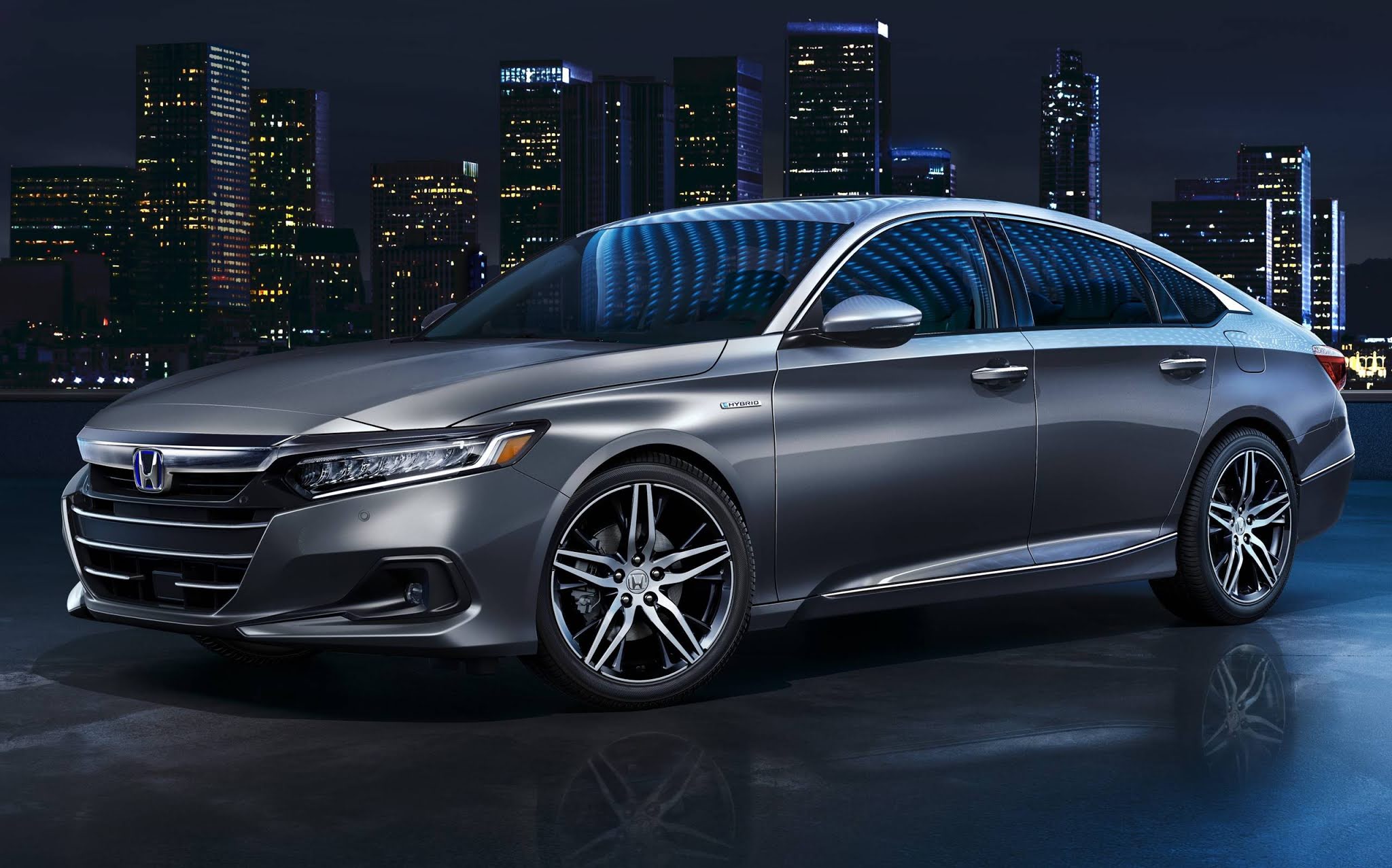
Previously, the battery pack interfered with the ability to fold down the rear seats, but that’s no longer the case. The Hybrid now features a 60/40-split folding rear seat and offers the same generous 16.7 cubic feet of trunk space found in its gasoline-only counterpart.
Under the hood, the 2018 Accord Hybrid retains the same powertrain as the previous year’s model—a 2.0-liter four-cylinder engine paired with two electric motors.
While there’s a very slight decrease in fuel economy compared to the 2017 version—“going from an EPA-estimated 48 mpg combined in 2017 to 47 mpg combined this year”—this drop is minimal. Even with that change, the Accord Hybrid still delivers excellent efficiency for a midsize sedan of its class and size.
Key strengths:
- Simplified hybrid layout
- Minimal high-voltage part failures
- Excellent software integration
- High-quality sensors
Real-world feedback: Mechanics note very few hybrid-specific service needs related to software or electrical resets even with high mileage.
4. Hyundai Ioniq Hybrid (2017–2022)
Despite Hyundai’s mixed early hybrid track record, the Ioniq surprised critics with its no-nonsense, stable hybrid system. It’s simple, durable, and less prone to electrical gremlins.
The 2022 Ioniq Hybrid belongs to Hyundai’s two-vehicle Ioniq family, which also includes the separately reviewed Ioniq Plug-In Hybrid. For this model year, Hyundai has discontinued the Ioniq Electric.
If you’re in the market for a budget-friendly compact hybrid with the added practicality of a hatchback design, the Ioniq Hybrid makes for a compelling option. In terms of fuel economy, it achieves “an EPA-estimated 59 mpg combined in the base Blue trim and 55 mpg combined in the higher trims,” which is impressive for the segment.
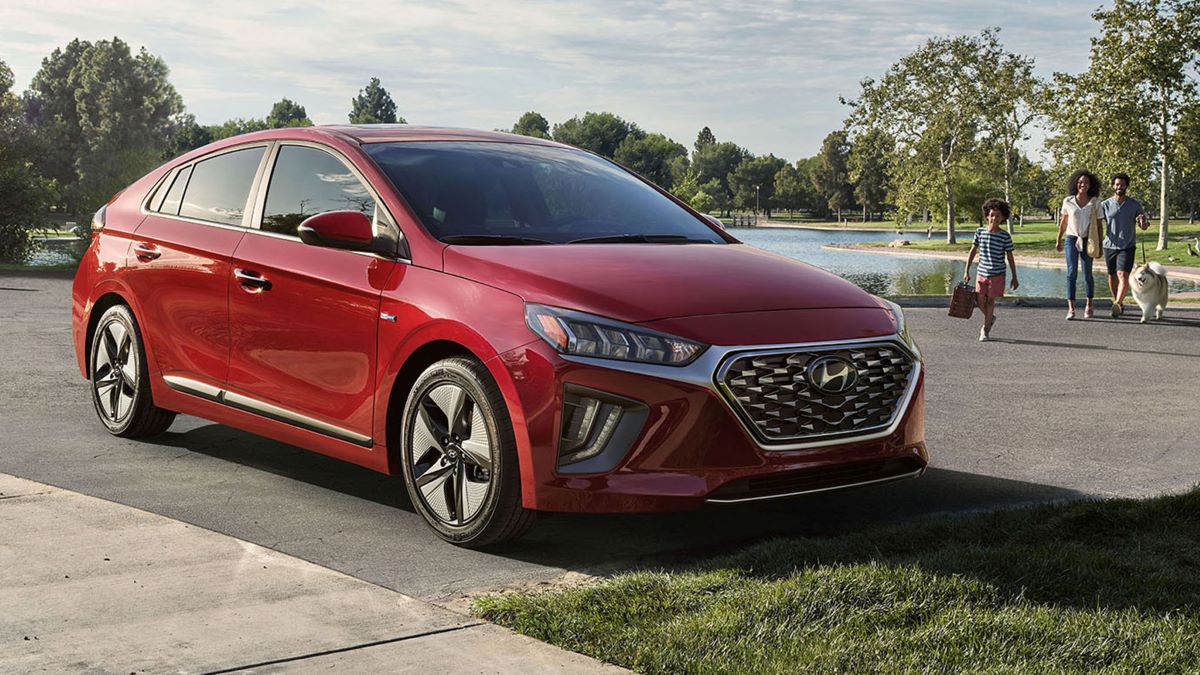
Cargo space is another strong point for the Ioniq Hybrid. It provides 26.5 cubic feet of room behind the rear seats, offering more space than any traditional sedan and rivaling the cargo capacity found in some small SUVs. On top of that, Hyundai includes a solid list of standard features in the Ioniq, along with a selection of useful driver assistance technologies.
Should the Ioniq Hybrid fall short of meeting all your expectations or needs, Hyundai has expanded its hybrid lineup to include two additional options worth considering: the Elantra Hybrid sedan and the Tucson Hybrid SUV. These models may offer better fits depending on your specific preferences for body style, interior space, or available features.
Key strengths:
- Conservative electric motor tuning
- Long-life battery cooling systems
- Low inverter failure rates
Real-world feedback: Owners rarely deal with system faults or “Check Hybrid System” warnings, and electrical performance remains strong over time.
Also Read: 5 Cars That Can Idle Forever and 5 That Overheat at Stoplights
5. Ford Escape Hybrid (2020–Present)
The second-generation Escape Hybrid marks Ford’s return to form, and they nailed the electrical architecture. Borrowing proven tech from the original Fusion Hybrid, this version runs clean.
With two electrified powertrains available, the 2020 Ford Escape Hybrid SUV serves as Ford’s answer for buyers in search of efficient, city-friendly transportation—especially now that the compact Focus sedan and hatchback models have been discontinued.
This hybrid model is built on the platform of the nonhybrid Escape, which enters its fourth generation in 2020. Compared to the more rugged and boxy Bronco Sport, with which it shares mechanical underpinnings, the Escape Hybrid opts for a softer, more rounded exterior design.
The base powertrain consists of a 2.5-liter four-cylinder engine coupled with two electric motors, generating a combined 200 horsepower and offering optional all-wheel drive. A plug-in hybrid (PHEV) version is also available; it delivers a more robust 221 horsepower combined, but comes exclusively with front-wheel drive.
As expected from a hybrid, fuel efficiency is solid. However, buyers who want more than good mileage may find themselves underwhelmed by the Escape Hybrid’s interior, which is marred by plasticky materials and a relatively sparse feature set in the more affordable trims.
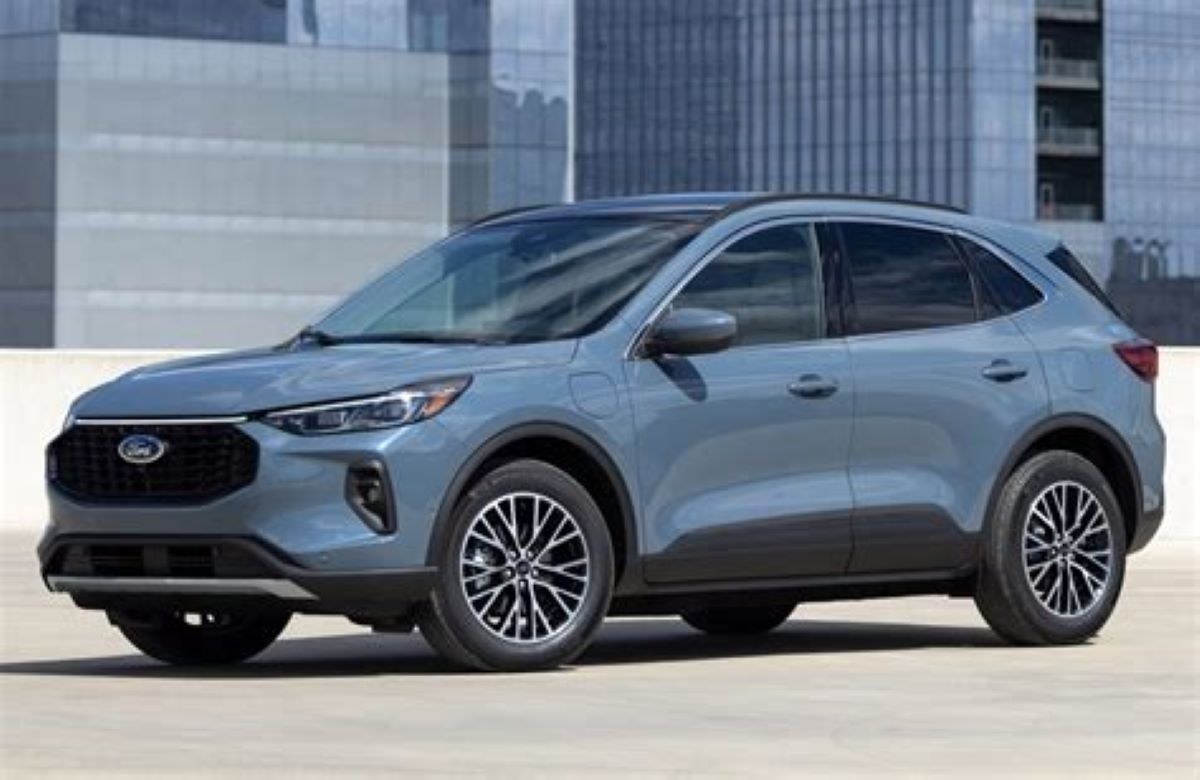
The Escape Hybrid marks its return to Ford’s lineup for 2020, debuting alongside the redesigned nonhybrid Escape. While the last generation of the Escape didn’t include a hybrid model, electrified versions were available in the first and second generations.
For the best value, the mid-range Titanium trim stands out. It comes equipped with significantly more standard features than the entry-level SE Sport, including leather-trimmed seats, dual-zone automatic climate control, adaptive cruise control, in-dash navigation, a self-parking system, and a premium 10-speaker Bang & Olufsen sound system.
To remain competitive with rivals like the Honda CR-V Hybrid and Toyota RAV4 Hybrid, Ford offers the Escape Hybrid with two electrified setups. The standard configuration includes a 2.5-liter four-cylinder engine paired with two electric motors, delivering a total of 200 horsepower.
It comes standard with front-wheel drive and a continuously variable automatic transmission (CVT), while all-wheel drive is optional. The plug-in hybrid variant ups the output to 221 horsepower, thanks to a stronger electric motor, but is available only in front-wheel-drive form.
Handling on both models is capable but uninspiring—“Handling for both is competent but forgettable, and driving enthusiasts won’t find it satisfying on a twisty road.” That said, for those primarily using the Escape Hybrid for commuting or city driving, the ride is smooth and agreeable.
Key strengths:
- Updated, glitch-free battery management system
- Few CAN-bus communication errors
- Stable software over-the-air updates
Real-world feedback: Users praise it for never needing random resets or dealing with system warnings unlike the earlier C-Max.
Hybrids That Constantly Need Resets
In this article, we’re diving into the hybrids that have developed a reputation for needing constant resets—whether it’s due to software bugs, electrical gremlins, or poor system integration. If you’re in the market for a hybrid or already own one and are wondering why your car behaves like a misfiring laptop, this list will open your eyes.
1. Ford C-Max Hybrid (2013–2018)
Common issues: The C-Max is notorious for electrical glitches. Owners routinely report needing to reset the hybrid system, especially after cold starts or software updates.
The Ford C-Max kicks things off with a hybrid powertrain that’s nearly identical to the one used in the Fusion Hybrid sedan. This setup features a 2.0-liter four-cylinder engine paired with an electric motor, delivering a combined output of 188 horsepower and earning an EPA-estimated 40 mpg in combined driving.
From the side, the five-passenger C-Max stands a bit taller than a typical hatchback or wagon. This additional height lends the four-door hatchback/wagon blend a modest boost in interior space, benefiting passengers with a roomier cabin feel. Inside, the C-Max offers an attractive and well-laid-out interior, constructed with quality materials.
Depending on the trim level, it comes equipped with a generous array of high-tech convenience features. On the road, the C-Max has impressed with its polished, mature driving demeanor. The ride quality is smooth, the handling is composed, and wind and road noise are pleasantly minimal.
These strengths become even more apparent when compared with the Toyota Prius, which falls short in both interior aesthetics and overall refinement on the road. However, if maximum cargo space is your priority, the C-Max may not be the ideal option—particularly when matched up against the roomier and more wagon-like 2014 Toyota Prius V.
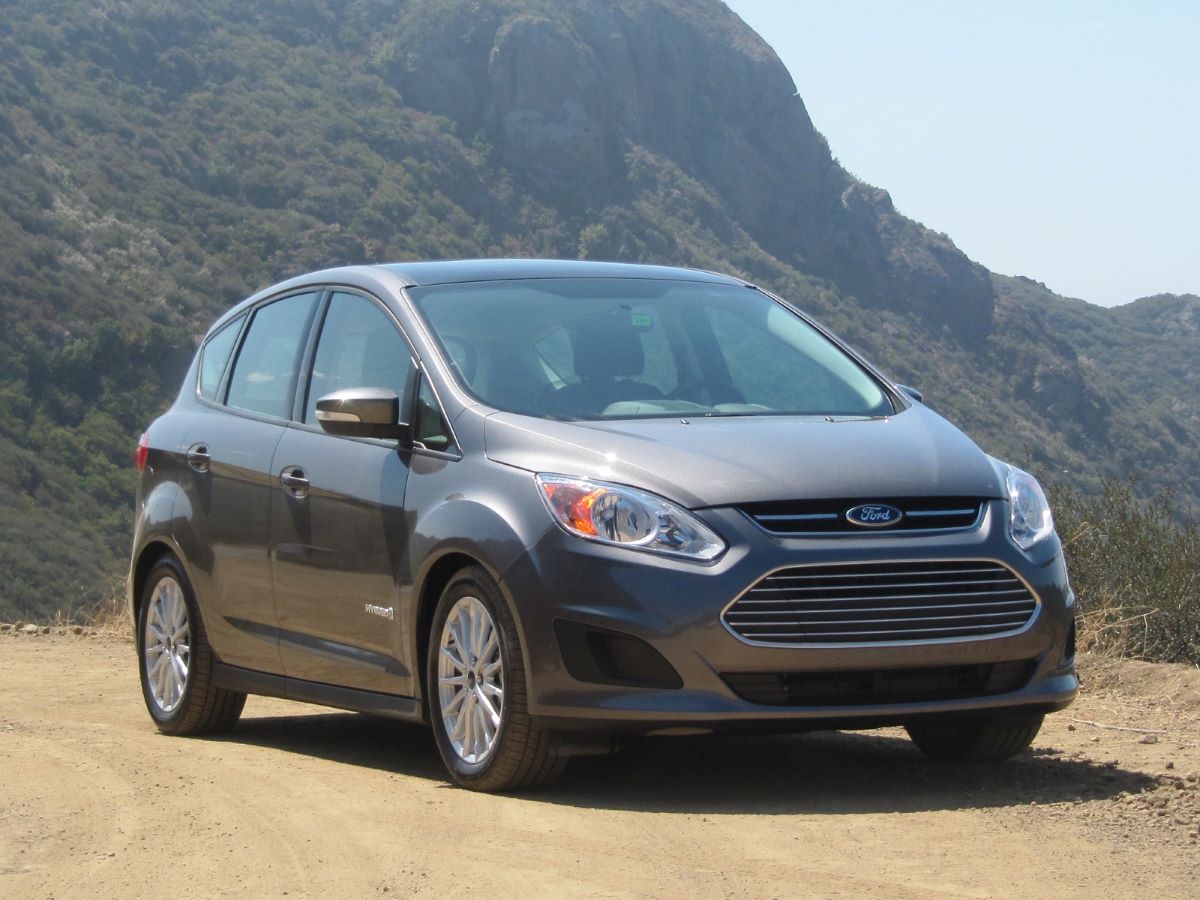
Shoppers who want a compact yet family-friendly vehicle might also consider alternatives like the 2014 Honda CR-V (though it trades off fuel economy for space), the Volkswagen Jetta TDI SportWagen, or even the Mazda 5 for a true minivan experience. All things considered, though, Ford’s C-Max stands out as a capable and versatile option in this segment.
The 2014 Ford C-Max Hybrid is equipped with a 2.0-liter four-cylinder gasoline engine rated at 141 horsepower and 121 pound-feet of torque. This engine works in tandem with an electric motor powered by a lithium-ion battery pack, and together they generate a total system output of 188 horsepower.
While Ford has recently refined the C-Max’s transmission and improved its aerodynamic profile to boost fuel efficiency, the most current EPA ratings list it at 40 mpg combined (42 mpg city / 37 mpg highway).
Frequent complaints:
- “Check EV System” lights
- Sudden loss of power
- Faulty DC-DC converter readings
- Poor software integration with infotainment
Mechanic insights: Techs often have to disconnect the 12V battery just to clear phantom codes, making it a hybrid that acts more like a beta test.
2. Kia Optima Hybrid (2011–2016)
Common issues: Kia’s early attempt at hybrid tech left much to be desired. The car frequently enters “limp mode” due to miscommunication between the engine and electric systems.
Kia’s Optima has long been recognized as a stylish, value-oriented contender in the midsize sedan market, and the 2016 Kia Optima Hybrid builds on those strengths with a focus on improved fuel efficiency.
However, it’s worth pointing out that while the rest of the 2016 Optima lineup has undergone a complete redesign, the hybrid version still rides on the previous-generation platform.
On the plus side, despite its older underpinnings, the Optima Hybrid leads the family in fuel economy. That alone doesn’t make it a must-buy, but it remains a well-rounded sedan that could be an appealing choice—especially if priced right.
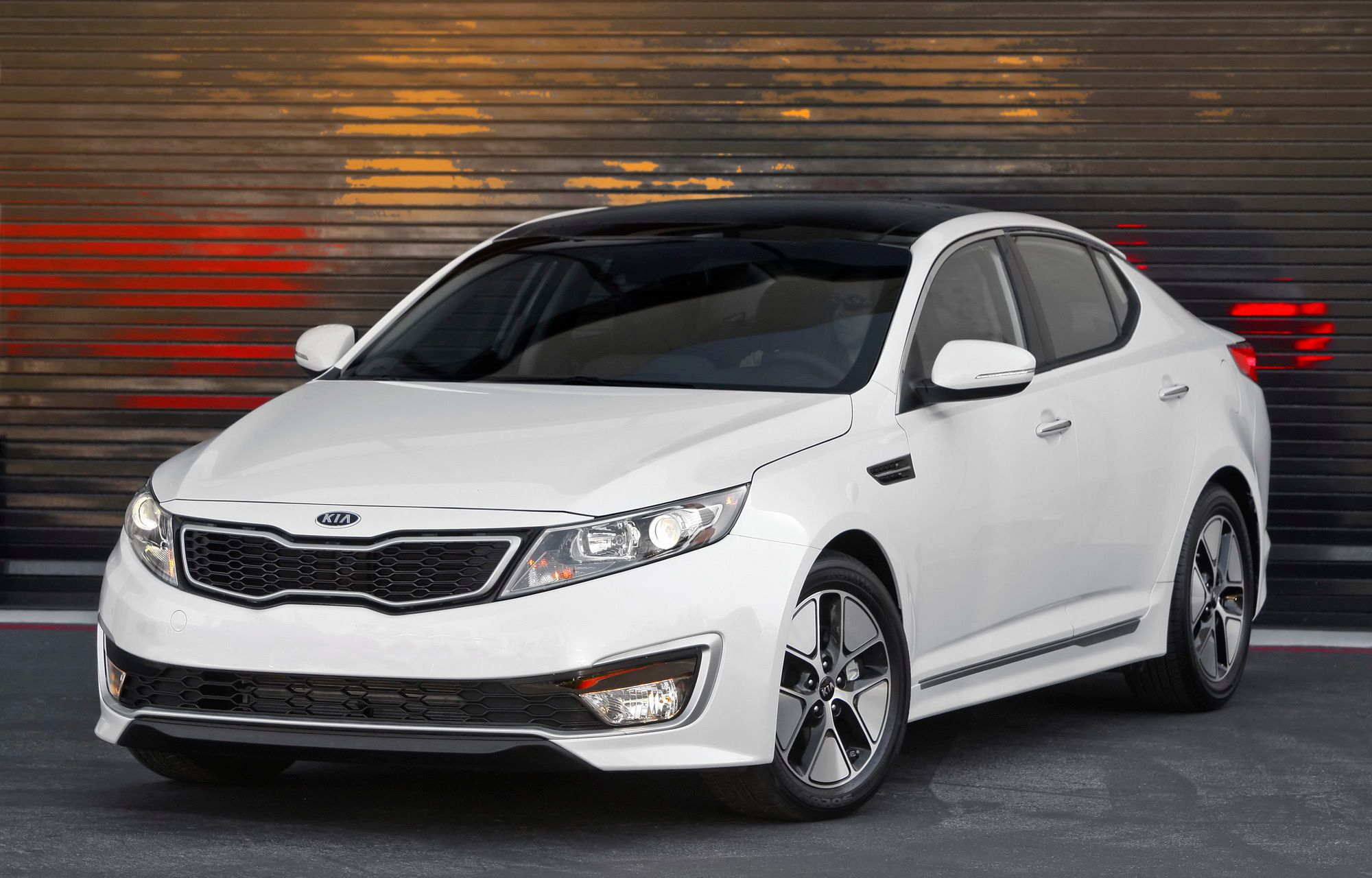
While it may not be the freshest in the segment from a technical standpoint, the 2016 Kia Optima Hybrid still delivers a design that feels modern and appealing.
It also trails in overall refinement—its regenerative braking system, for example, doesn’t offer the smooth and progressive feel that some other hybrids have mastered.
Additionally, rear-seat headroom might be a bit snug for taller passengers. Even so, the Optima Hybrid makes up ground with a refined and upscale interior, strong crash-test safety ratings, and Kia’s trademark commitment to delivering solid value for money.
Frequent complaints:
- Charging system errors
- HV battery software glitches
- Inverter cooling pump failures
- Dashboard warning storms
Mechanic insights: You’ll often find yourself at the dealership just to have the system flashed or reset only for the error to return days later.
3. Chevrolet Volt (2011–2015)
Common issues:
While innovative, early Volts suffer from software that hasn’t aged well. Control module communication failures and infotainment crashes are widespread.
If your daily round-trip commute is around 30 miles and you make a habit of plugging in your Volt every night when you get home — with a full charge taking as little as three hours — go ahead and award yourself a gold star.
In this scenario, your fuel economy would essentially be infinite, as you’d be running exclusively on battery power and wouldn’t be consuming any gasoline at all.
Now consider a longer commute — say, 60 miles. In this case, you’d be relying on gasoline for roughly half the trip each day, meaning you’d need to refuel on a regular basis.
While that figure is decent when compared to standard gasoline-powered vehicles, it falls short when stacked against traditional hybrids, which typically achieve somewhere in the mid-40s mpg range.
As this illustrates, your average daily driving distance plays a major role in determining just how economical the Volt will be for you. Most prospective owners are likely to benefit from its electric range, and the cost of electricity to recharge the battery is just a fraction of what you’d spend on an equivalent amount of gasoline.
However, when you zoom out and consider the overall investment, it’s not exactly a cheap undertaking. Even factoring in the $7,500 federal tax credit, a base Volt still comes in around $32,500 — and that’s before accounting for the optional home charging station, which can be a valuable addition for a plug-in hybrid like the Volt.
All things considered, the 2012 Chevrolet Volt strikes a compelling balance between a purely electric vehicle — which typically tops out around 75 miles of range before needing a lengthy recharge — and a conventional hybrid, which doesn’t offer the Volt’s capability for all-electric operation at highway speeds.
Last year, the Volt stood out as a unique offering. But for 2012, it sees competition from newcomers like the Toyota Prius Plug-in. The Prius provides about 15 miles of electric-only range but comes in at a significantly lower cost.
Then there’s the Nissan Leaf, a fully electric car with a range of approximately 100 miles. Still, if you’re looking for a practical yet innovative glimpse into the future of green motoring, the 2012 Chevy Volt is well worth a look.
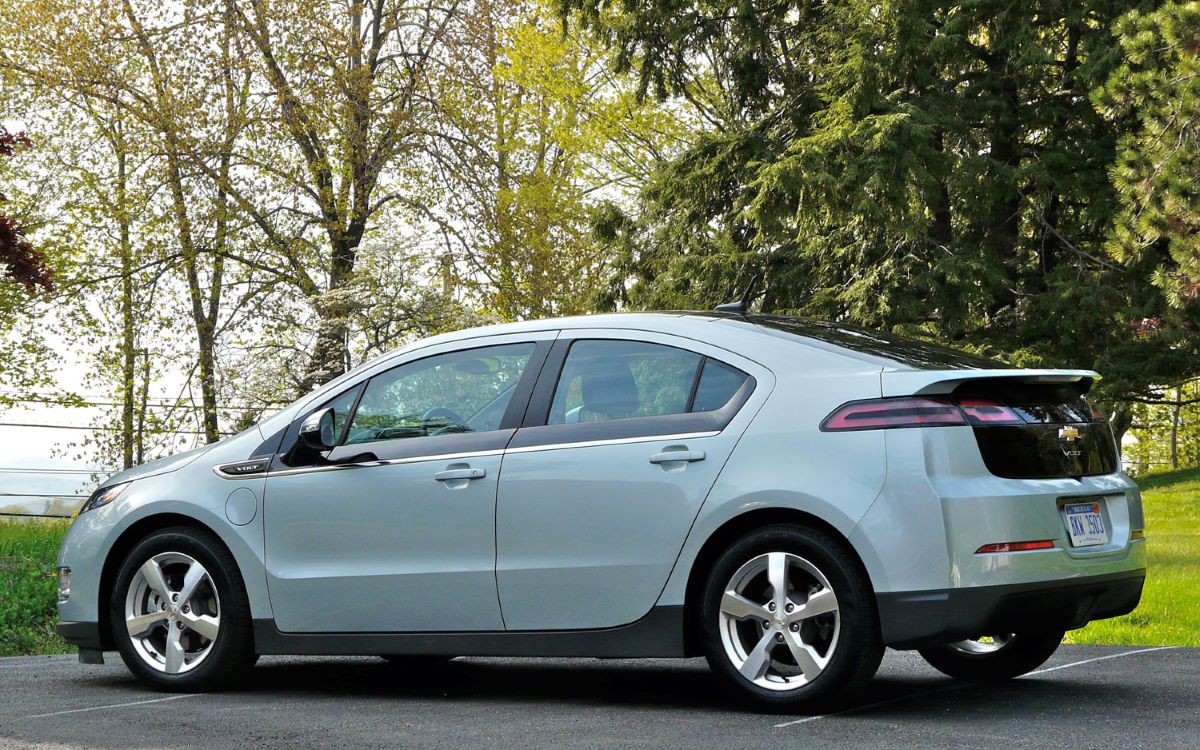
Frequent complaints:
- Random electric mode dropouts
- Power loss with no warning
- Frequent TSBs requiring reprogramming
- High-voltage battery fault codes
Mechanic insights: GM techs often need to reflash several modules at once to stop cascading electrical faults. Owners joke that “resetting” the Volt is a driving ritual.
4. Nissan Pathfinder Hybrid (2014–2015)
Short-lived and widely disliked, the Pathfinder Hybrid constantly suffered from sensor misreads and poor software calibration. It’s a reset nightmare.
The current Nissan Pathfinder is powered by a 3.5-liter V6 engine paired with a continuously variable transmission (CVT), which delivers power to the front wheels or, in all-wheel-drive variants, to all four wheels.
Thanks in part to the CVT, the 2014 Pathfinder earns EPA fuel economy ratings of 22 mpg combined for front-wheel-drive models and 21 mpg combined for those with all-wheel drive. While those figures might not seem particularly impressive in isolation, they actually place the Pathfinder among the most fuel-efficient seven-passenger crossovers currently available.
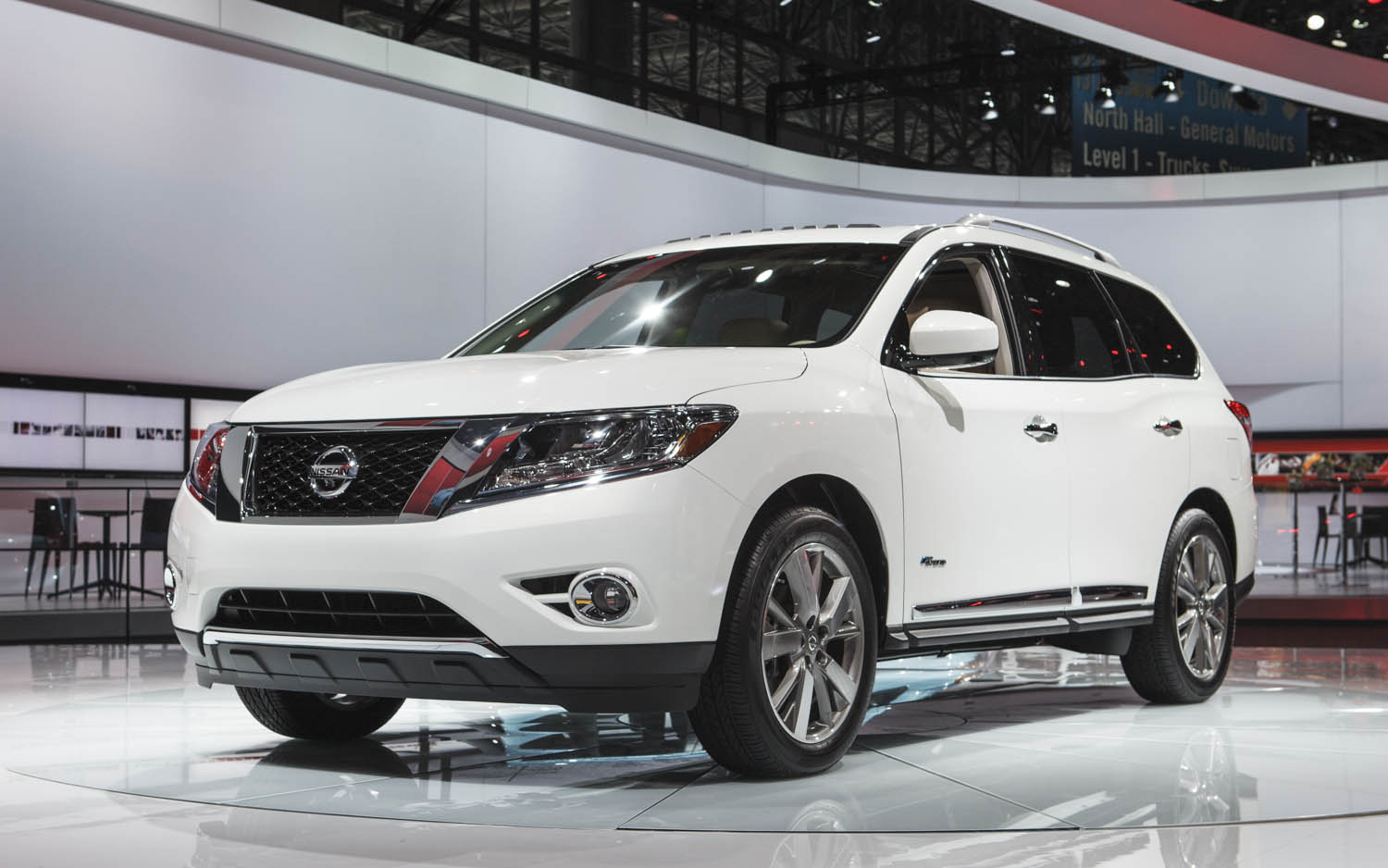
For those who find these fuel economy numbers lacking, 2014 brings the debut of the Pathfinder Hybrid. This version combines a supercharged 2.5-liter four-cylinder engine with a 15-kilowatt electric motor, along with a compact lithium-ion battery tucked neatly beneath the third-row seat.
The result is a notable boost in fuel efficiency without compromising passenger or cargo space. Given the limited number of hybrid SUVs that can seat seven, the 2014 Nissan Pathfinder Hybrid offers a compelling alternative to the slightly more fuel-efficient 2014 Toyota Highlander Hybrid — which remains one of the only other comparable options within this segment and price range.
Frequent complaints:
- Hybrid system shutdowns
- Inverter overheating
- Battery cooling fan issues
- Faulty drive mode switches
Mechanic insights: A technician reset might clear the issue temporarily, but long-term reliability was so bad that Nissan dropped the model after just two years.
5. BMW X5 xDrive40e (2016–2018)
The plug-in hybrid X5 brought premium electric drive but also premium electrical headaches. BMW’s overly complex ECU system tends to clash under pressure.
The 2017 BMW X5 may not be the freshest face among luxury SUVs, especially as some competitors have recently undergone significant updates, raising the stakes in this increasingly competitive segment.
The Audi Q7 stands out as a strong rival, earning top marks alongside the Porsche Cayenne. Depending on your preferences and priorities, other contenders like the Mercedes-Benz GLE-Class and Volvo XC90 are also well worth considering.
Across all 2017 BMW X5 models, standard safety equipment includes stability and traction control, antilock brakes, automatic brake drying, front side airbags, side curtain airbags, active head restraints, and the BMW Assist and Remote Services emergency telematics suite. On xDrive models, hill descent control is also standard.
Stepping up to the Driver Assistance Plus package enhances the safety suite even further with features such as blind-spot monitoring, a top-down camera system, lane departure warning, speed limit information, and a forward collision warning and mitigation system with pedestrian detection — capable of automatically applying the brakes at low speeds to help avoid or lessen an impact
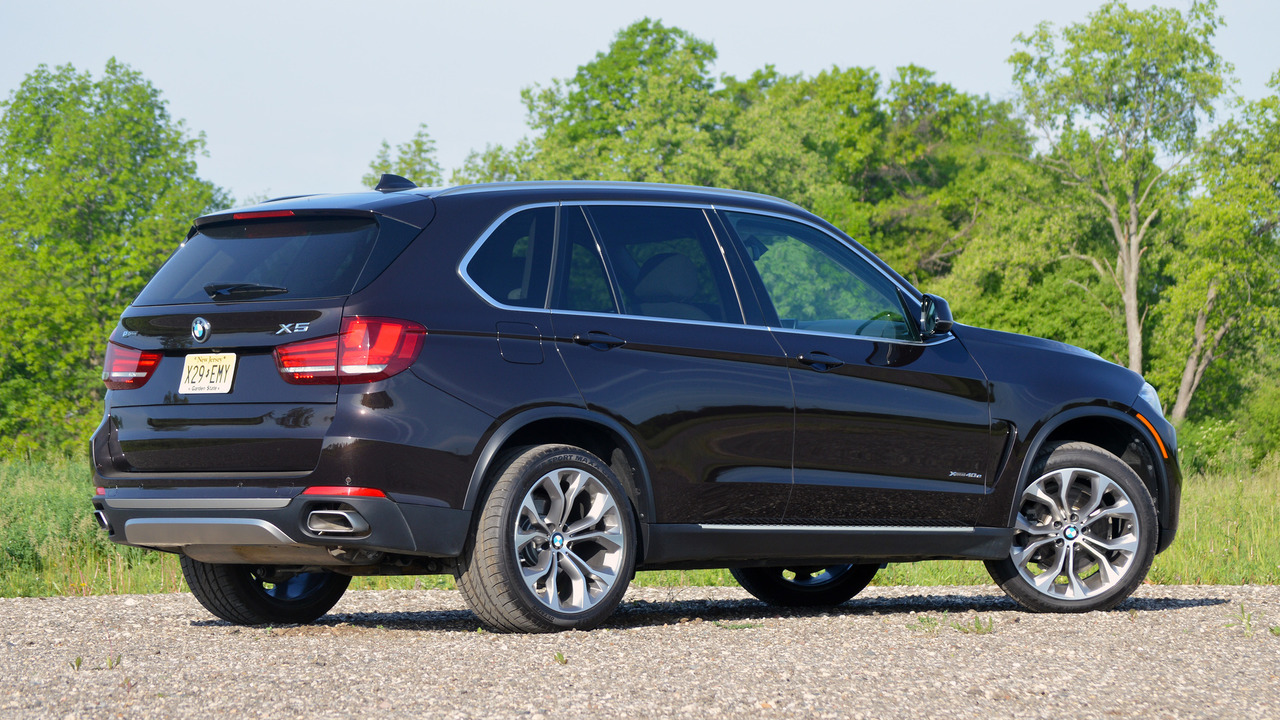
Frequent complaints:
- High-voltage cable errors
- Charge port communication faults
- Drivetrain malfunction alerts
- Electrical system drain warnings
Mechanic insights: Often requires a dealer-only diagnostic tool to clear ghost errors. Battery conditioning and resets are frequent, especially in cold climates.
When it comes to hybrid reliability, the difference is often in how well the electrical and software systems are integrated. Brands like Toyota and Honda have spent decades refining their tech, resulting in near-zero reset requirements.
Others, especially early adopters from American and Korean brands, have struggled with coordination between components.
If you want a hybrid that won’t leave you stranded or stuck rebooting the system in a parking lot stick with proven names and platforms that prioritize rock-solid electronics.

